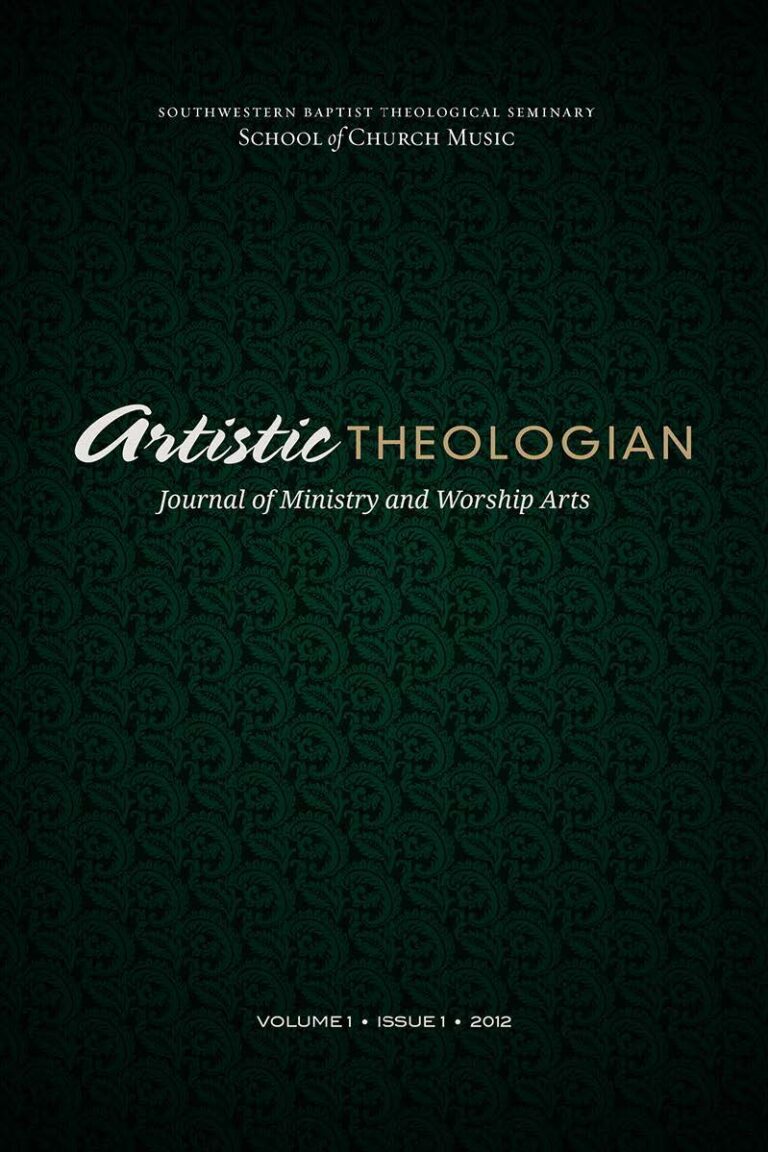
Introducing The Artistic Theologian
Artistic Theologian
Volume 1, Summer 2012
Editor-in-Chief: John E. Simons
From Memory to Imagination: Reforming the Church’s Music, by Randall C. Bradley. Grand Rapids: Eerdmans, 2012. 235 pp. $25.00.
Randall Bradley, Professor of Church Music at Baylor Univeristy, uses his years of ministry in a variety of contexts to craft a new lens to examine the worship of the church. The lens of “memory to imagination” (1) provides new insights into the philosophy of worship. “The importance of memory is not primarily in the accuracy of facts but in the connection of a story from individual to individual and community to community” (4). “Imagination is built on experience, on our story” (6). “Remembering the past is the key to building the future, for however the music of the church is shaped in times to come, it should somehow reference the past and the rich history on whose shoulders it stands” (218).
“The church’s music is in need of prophetic re-imagination and re-formation. Because it has been subjected to years of wear and tear and hundreds of cosmetic updates, . . . a cover job will not suffice anymore” (9). A brief summary of church music from the 1950s to present day reveals the reason for the crisis. Bradley identifies that which is inhibiting the recovery from this crisis and the key players of the crisis.
Bradley constructs his solutions to the state of church music on the supposition that “God doesn’t necessarily value one type of music more than another. While we may place different values on different types of music, we can never be fully confident of God’s value” (48–49). With all musical forms acceptable, there are then two primary elements on which the church’s music should be built: text and melody (79). The Bible is “remarkably silent on most specifics regarding the music of the church” (81). Bradley summarizes what the Bible explicitly states, dispels the myths of what it does not say concerning music, and gives the larger framework for church music. Summarily stated, “Christ came to redeem the world, and Christ can redeem any music” (109).
“The hope of the future church is in its ability to be ecumenical and work together for the kingdom of God” (118). The community, not just one individual, must make decisions regarding worship. The community will collectively seek to join God on him mission. “If the church is to be missional, its music must be noticeably linked to the music of the surrounding culture, its context” (189). As the community seeks to engage in true worship, “it involves our practicing hospitality as host, stranger, and guest” (158). “As hospitality, music seeks to minimize barriers to communication and vulnerability” (178). This may be achieved in different manners within different congregations. “Even though our musical preference may not match some of the preferences of our congregation, accepting their preferences will model genuine Christian community” (211).
An approach such as this diffuses the different sides of the worship battles with a recognition that they lie on different sides because of different experiences. Bradley identifies where the church is today and charts a course to emerge from the conflict of the past united. A vision is cast for a church that is less doctrinally and denominationally dependent, but rather is dependent on the core truth “Christ has died, Christ is risen, and Christ will come again!” (56).
While Bradley’s work is insightful, one criticism rests with his interpretation of Scripture. He states, “The Bible can be read and perceived differently by different individuals and faith communities” (50), and “The Bible isn’t a unified text with a single voice; rather it ‘speaks’ with a myriad of voices that occasionally conflict” (88). This posture affects many of the claims Bradley makes concerning worship; nevertheless, the reasoning supporting his overall argument is sound and worth considering.
Bradley’s contribution to the worship debate provides a welcome alternative to the militant language often used. This book may have tremendous impact on worship in the coming years because it encapsulates in a well-researched account the state of the church of today and its path to becoming the church of tomorrow. The first few chapters alone make this book an essential addition to the library of the church musician, but it should be read understanding the presuppositions of the author with regard to the Scriptures.
Robert Pendergraft
Southwestern Baptist Theological Seminary
Fort Worth, TX





